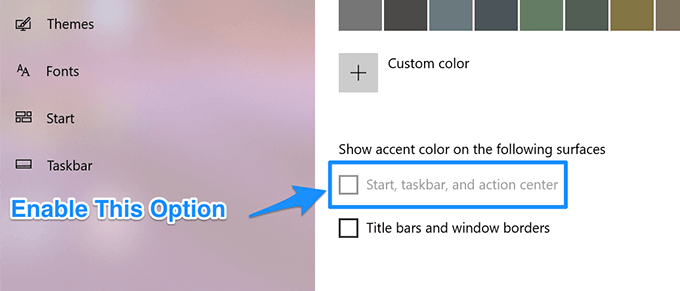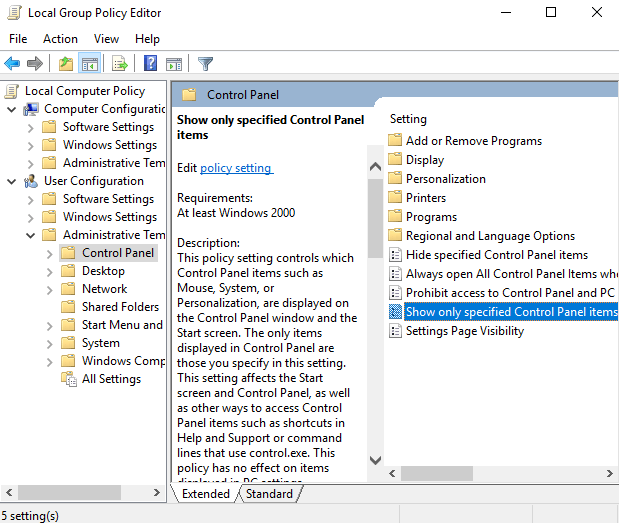A Windows Blue Screen of Death (BSOD) error can seem catastrophic, especially if you’re working on something important. Unfortunately, BSODs are typically hard to decipher, with error names like “unexpected kernel mode trap” and “bad system config info” that don’t offer much information on the cause (or how to fix it).
If your Windows PC suffers from a bad system config info BSOD error, you’ll need to troubleshoot the problem. The first step is understanding what might cause this error, with anything from corrupt system files to outdated drivers causing it to crash your PC. To fix this BSOD error, here’s what you’ll need to do.
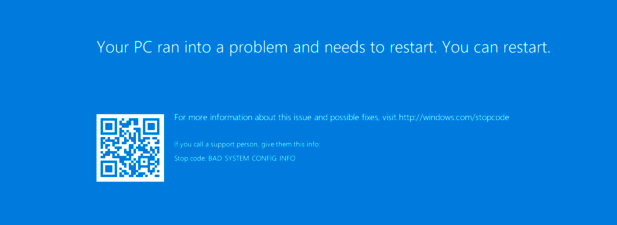

Contents
- 1 What Causes the Bad System Config Info BSOD in Windows 10?
- 2 Use the Windows 10 Troubleshooter
- 3 Update Windows System and Driver Files
- 4 Check and Fix Corrupt Windows System Files
- 5 Check and Repair Windows Registry Errors
- 6 Repair Windows Boot Configuration Using Bootrec
- 7 Further Windows 10 Maintenance Steps
What Causes the Bad System Config Info BSOD in Windows 10?
Unfortunately, there isn’t a clear cause of a bad system config info BSOD (or Windows stop code 0x00000074) in Windows 10. The name suggests a bad configuration of some sort, and this isn’t too far from the truth, with reports that a corrupted Windows Registry causes the issue.
It’s also been reported that a corrupt boot configuration file, missing or corrupted system files, outdated drivers, or even a faulty hard drive may cause the problem. Thankfully, many of the steps outlined below to troubleshoot this issue work well, regardless of the cause.
Use the Windows 10 Troubleshooter
It’s difficult to work out the causes behind a Windows 10 BSOD, with error codes that are hard to understand and aren’t usually meant for the end user. Thankfully, Microsoft has a Windows troubleshooting tool that can help you identify and resolve problems with your system.
This tool is only really useful if you made a change to your system immediately prior to the bad system config info error. For instance, if you recently used Windows Update, this could point to corrupted system files. You’ll need to run a troubleshooting tool most relevant to the change (for instance, Windows Update).
- To launch the Windows Troubleshooter, right-click the Start menu and select the Settings option.

- In the Windows Settings menu, select Update & Security > Troubleshoot > Additional troubleshooters. In the Additional troubleshooters menu, a list of available troubleshooting tools are listed. Select one of the tools, then select Run the troubleshooter to begin the troubleshooting process.
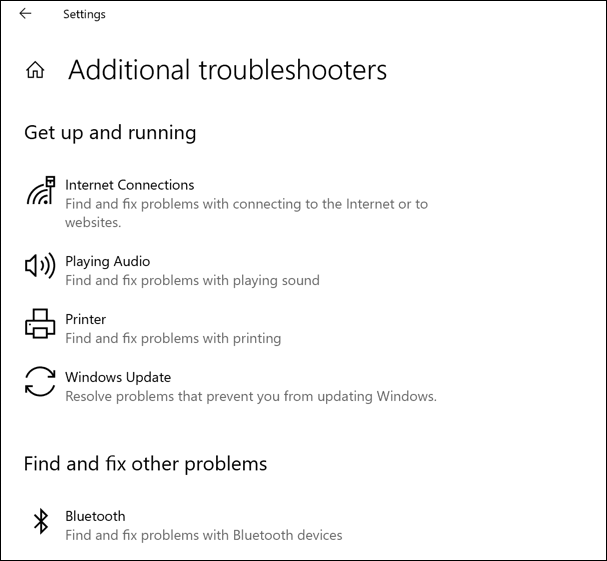
For each troubleshooting tool, Windows will automatically try to identify and fix any problems with your system. If Windows can’t resolve the issue (or if you can’t identify the likely cause, based on your recent activity), you may need to skip this section and try one of the additional fixes below instead.
Update Windows System and Driver Files
Microsoft regularly issues new updates for Windows that include bug fixes, feature upgrades, and support for new hardware. If you’ve installed new hardware recently, or if you’ve not updated your system in a while, then running Windows Update and checking for new system and driver updates can help to fix unresolved BSODs.
- To start, open Windows Settings by right-clicking the Start menu and selecting Settings from the pop-up menu.
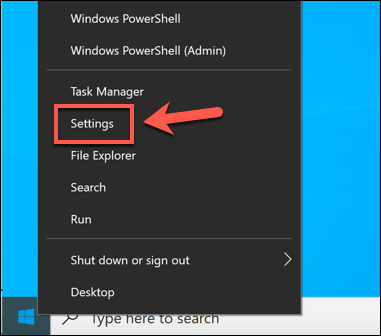
- In the Settings menu, select Update & Security. Windows will automatically begin searching for new updates. If it doesn’t, select Check for Updates. Otherwise, select Download (or Download and Install) to begin downloading and installing new updates.
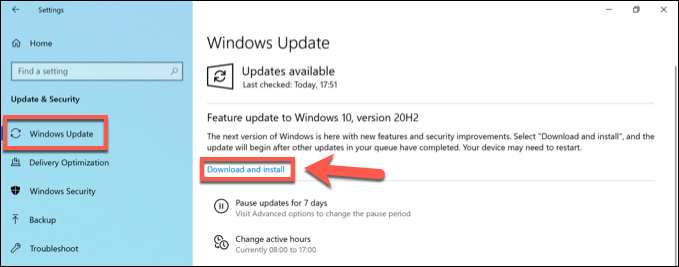
Windows Update is the best way to install new Windows system updates, but if you’ve installed recently released hardware (such as a brand new graphics card), you may need to visit manufacturer websites for the latest device drivers for that hardware.
Check and Fix Corrupt Windows System Files
One of the clearest causes of a bad system config info BSOD is, unfortunately, corrupt system files. If you’re still able to load your Windows PC, the best way to check for this error is to run some system repair tools from a Windows PowerShell terminal window.
- To do this, right-click the Start menu and select the Windows PowerShell (Admin) option.
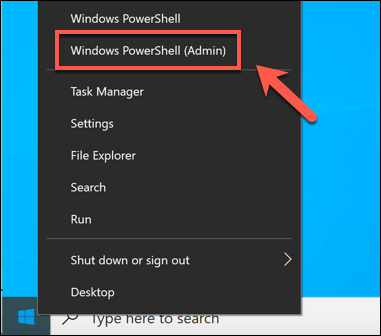
- In the new PowerShell window, type sfc /scannow to run the System File Checker tool. This will check Windows for corrupted system files and replace them, if necessary. Allow some time for this process to complete.

- Once the sfc tool is finished, type chkdsk /r to run the Check Disk utility. This will check your system for drive file system errors following a restart. You’ll need to confirm this by typing Y and pressing enter.

Once chkdsk has been scheduled, restart your PC and allow the tool to check your file system for errors. Any errors it detects will be fixed automatically (where possible). If chkdsk can’t repair those errors, it could point to a faulty hard drive. You may need to consider upgrading your PC with a new drive to repair the issue.
Check and Repair Windows Registry Errors
A major reported cause of a bad system config info BSOD is an error in the Windows Registry, the complex database of configuration settings that keeps Windows running properly.
Checking for and fixing Windows 10 registry errors can fix this issue, but there isn’t an easy way to do this. Unless you already have a Windows Registry backup, you can’t completely revert any changes to your Windows registry that might have caused this BSOD error.
However, there are third-party apps like Wise Registry Cleaner that can restore and fix some Windows and third-party settings in your registry. Resolving these issues can often stop a BSOD error (like a bad system config info BSOD) from occurring again.
- To do this, download and install the free version of the Wise Registry Cleaner tool. Once installed, run the app and select Deep Scan to check your registry for potential errors.
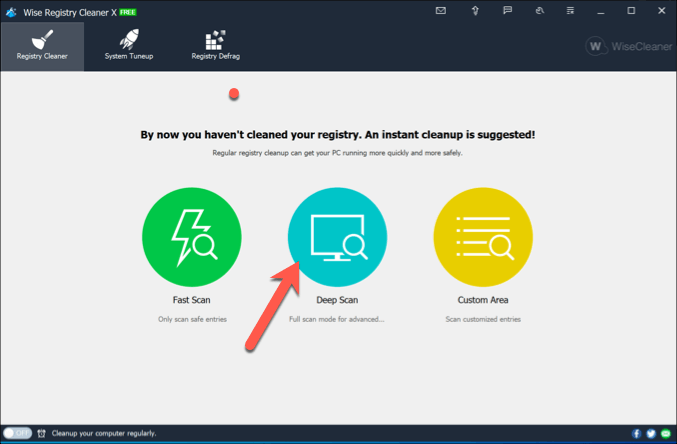
- Allow the scan to complete, which may take some time. At the end of the process, check the list of corrupted entries and ensure that you’re okay with removing or fixing each of them. If you are, select the Clean button to clean the registry.

Wise Registry Cleaner (and other registry cleaning tools out there) aren’t miracle tools, but they can identify significant issues or conflicts within your registry. For instance, if you’ve been infected with malware that has changed the registry, apps like this can identify the problem.
If that’s the case, however, you’ll need to scan for malware separately to check for (and remove) any infection.
Repair Windows Boot Configuration Using Bootrec
Another major commonly reported cause of a bad system config info BSOD error (especially for Windows 10 installations running as a virtual machine) is a corrupted boot configuration, which helps Windows to load correctly. To repair this, you’ll need to use the bootrec tool.
- To run bootrec successfully, you’ll need to force Window into the Advanced Options menu. Start by restarting your PC and pressing F8 before the spinning icon or interrupting the start-up process at least twice to run automatic repair. Once the boot troubleshooting menu appears, select Advanced options.
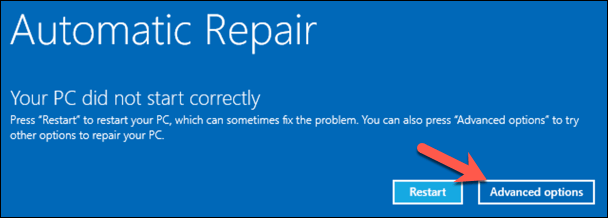
- Select Troubleshoot in the Choose an option menu.

- Select Advanced options in the Troubleshoot menu.
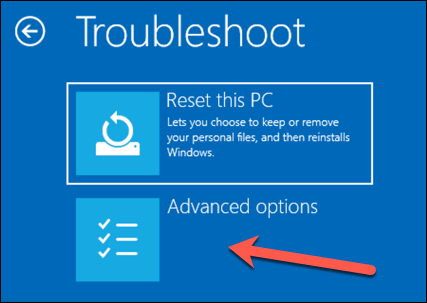
- In the next menu, select Command Prompt to boot to a minimal Windows 10 environment, displaying a command prompt window that you can run commands from.
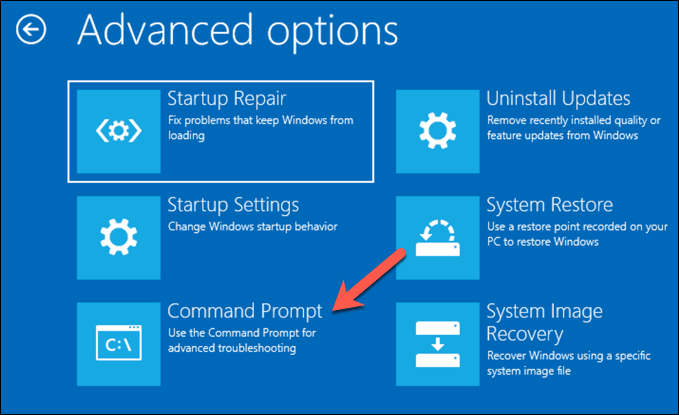
- In the command prompt window, type and run the following commands in sequence to repair your Windows boot configuration files:
- bootrec /Repairbcd
- bootrec /ScanOs
- bootrec /RepairMbr
- bootrec /FixBoot (for GPT drives) or bootrec /FixMbr (for MBR drives)
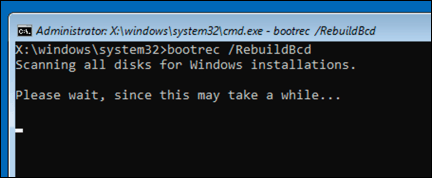
- Type exit to return to the options menu, then select Continue to boot Windows normally at this stage.
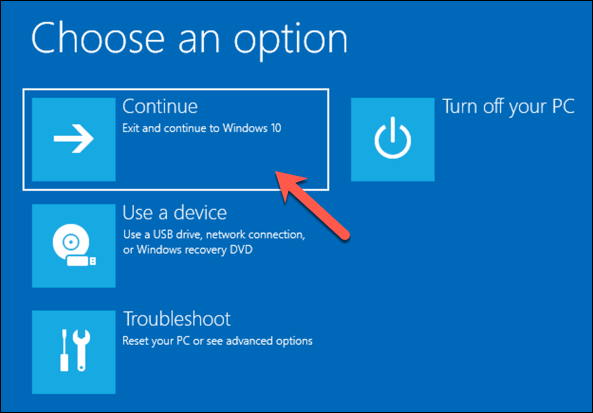
Further Windows 10 Maintenance Steps
The steps above should help to fix a bad system config info BSOD error for most users, but if you’re still facing issues, or if your PC won’t boot properly at all, you’ll need to consider resetting Windows 10 entirely, returning it to default settings and replacing all system files in the process.
If you’re seeing this BSOD error or others, such as a stop code memory management BSOD, it points to a PC that isn’t well maintained. You may need to consider more regular maintenance, including keeping Windows system files updated, as well as ensuring your device drivers are up-to-date.


